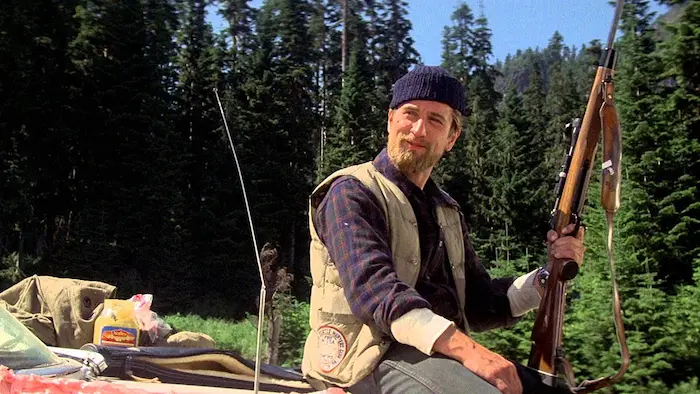Cavatina, a piece composed by Stanley Myers, gained widespread recognition when it was used as the main theme for the 1978 film The Deer Hunter. This hauntingly beautiful guitar composition has since become synonymous with the film and has been embraced by music lovers worldwide. Its serene and melancholic melody captures the emotional depth of the movie, making it an enduring piece of music history.
I. The Origin of Cavatina
Stanley Myers: The Composer
Stanley Myers, an English composer born in 1930, was known for his contributions to film music. He composed scores for over sixty films, but it was The Deer Hunter that brought him international fame. Myers was a versatile composer, comfortable in various musical genres, but his ability to evoke deep emotions through his music was his hallmark.
The Composition of Cavatina
Originally, Myers composed Cavatina for the piano. However, it was John Williams, the renowned classical guitarist, who adapted it for guitar. This adaptation gave the piece its distinctive and beloved sound. Williams’ interpretation of Cavatina brought a delicate and ethereal quality that resonated with audiences.
II. Cavatina in The Deer Hunter
The Film’s Impact
The Deer Hunter, directed by Michael Cimino, is a war drama that explores the impact of the Vietnam War on the lives of a group of friends from a small industrial town in Pennsylvania. The film’s powerful narrative and emotional depth made it a critical and commercial success, winning five Academy Awards, including Best Picture and Best Director.
The Role of Cavatina in the Film
Cavatina serves as the main theme of The Deer Hunter, playing a crucial role in underscoring the film’s emotional weight. The piece is used in key scenes to enhance the storytelling, reflecting the characters’ internal struggles and the haunting effects of war. Its gentle melody contrasts with the film’s intense and harrowing moments, providing a poignant counterpoint.
III. Musical Analysis of Cavatina
Melody and Harmony
Cavatina is characterized by its simple yet profoundly moving melody. The piece is in the key of D major, which contributes to its warm and inviting sound. The melody is lyrical and flowing, with a sense of longing and introspection. The harmonies are equally delicate, with a progression that supports the emotional arc of the melody.
Structure and Form
The structure of Cavatina is relatively straightforward, comprising a series of lyrical phrases that build upon one another. The form can be described as ABA, with the A section presenting the main theme and the B section providing a contrasting middle section. This form allows for a sense of return and resolution, which is emotionally satisfying for the listener.
Technical Aspects
For guitarists, Cavatina presents both a technical challenge and an opportunity to express deep emotion. The piece requires precise fingerpicking and control over dynamics to convey its subtle nuances. The guitarist must balance technical proficiency with musical sensitivity to bring out the full beauty of the composition.
IV. John Williams and Cavatina
Collaboration with Stanley Myers
John Williams’ collaboration with Stanley Myers on Cavatina was a significant moment in both their careers. Williams’ adaptation of the piece for guitar brought it to a wider audience and showcased his exceptional skill as a classical guitarist. This collaboration also highlighted the potential of classical guitar in film music.
Performance and Recordings
John Williams’ performance of Cavatina has been widely acclaimed. He has recorded the piece multiple times, each rendition capturing its timeless beauty. His recordings have introduced Cavatina to classical music enthusiasts and casual listeners alike, cementing its place in the classical guitar repertoire.
V. Cultural Impact of Cavatina
In Film and Beyond
Cavatina’s association with The Deer Hunter has made it an iconic piece of film music. It is often used in other contexts to evoke similar emotions, from other films to television shows and commercials. Its timeless melody has made it a favorite for various adaptations and arrangements.
In Popular Culture
Beyond its use in film, Cavatina has permeated popular culture. It is frequently performed at weddings and other significant events, where its emotional depth resonates with listeners. The piece has been covered by numerous artists, each bringing their unique interpretation to its haunting melody.
Influence on Musicians
Cavatina has inspired countless musicians, particularly guitarists. Its technical demands and emotional expressiveness make it a benchmark for classical guitar performance. Many aspiring guitarists aim to master Cavatina, viewing it as a rite of passage in their musical journey.
VI. The Legacy of Cavatina
Enduring Popularity
The enduring popularity of Cavatina is a testament to its universal appeal. Decades after its composition and use in The Deer Hunter, it continues to captivate audiences. Its ability to evoke deep emotions and its timeless beauty ensure that it remains a beloved piece of music.
Educational Value
Cavatina also holds significant educational value for music students. Its combination of technical challenge and expressive potential makes it an excellent piece for developing both technical skills and musicality. Teachers often include Cavatina in their curriculum to help students understand the importance of emotion in music performance.
See Also: Classical Music for Kids: A Deep Dive into Timeless Melodies
VII. Conclusion
Cavatina from The Deer Hunter is more than just a film score; it is a piece of music that has touched the hearts of many. Its beautiful melody and emotional depth have made it a timeless classic. Stanley Myers’ composition, brought to life by John Williams’ guitar, continues to resonate with listeners around the world. The legacy of Cavatina is a testament to the power of music to move us and to the enduring impact of a beautifully crafted piece of art.

